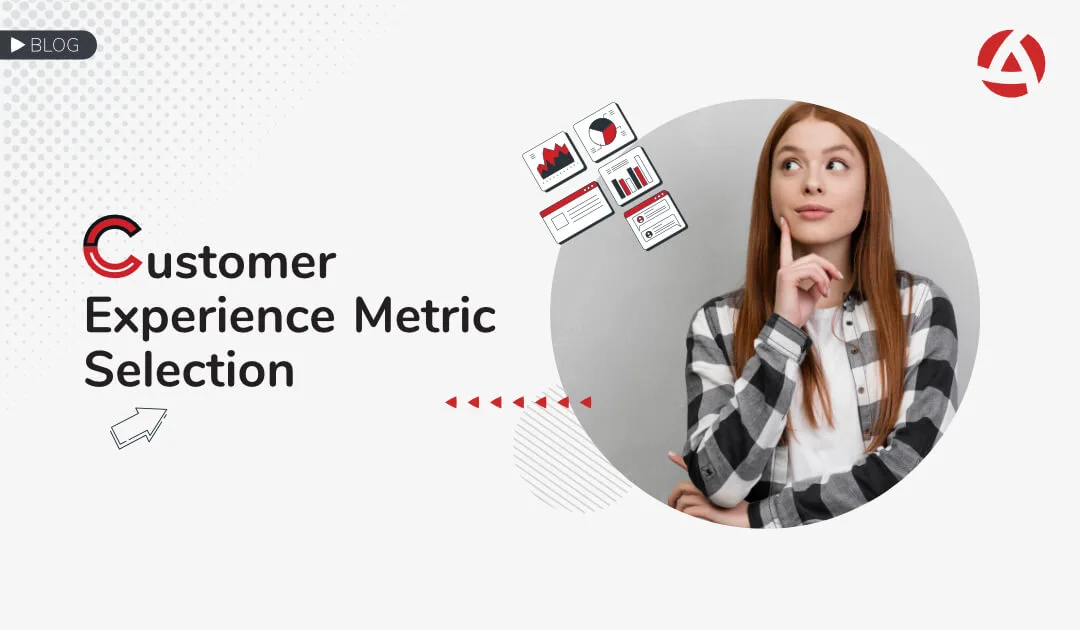CSAT vs NPS vs CES: The Complete Comparison
The first step before deep diving into customer experience metric selection is to understand the main areas to address when measuring CX. Here, we shared customer experience metrics in three different categories: customer perception of the quality of experience, operational metrics, and impact metrics. In this post, we will continue to share some frequently used metrics for gauging how customers perceive the quality of their experience. CSAT, NPS, or CES are correspondingly significant to measure the success of a company. Therefore, we should not say one is better than the other. However, NPS is the most commonly used experience metric, closely followed by CSAT and then CES. Let’s delve into “CSAT vs NPS vs CES” and understand how to approach customer experience metric selection.
Net Promoter Score (NPS):
First introduced in 2003 by Frederick F. Reichheld in a Harvard Business Review article, the Net Promoter Score has become one of the most widely used metrics in customer experience today. NPS is based on a single question, asking customers about the likelihood of recommending the brand to their friends or family. Customers give a score on a Net Promoter Score Scale of 0 – 10. The percentage of those who do not recommend (those who score between 0-6) is subtracted from the percentage of those who do (9 and 10 scores).
There are two types of NPS. The classic NPS question calculates the Relational NPS. Otherwise, if you ask, “How much would you recommend [brand x] to your friends or family according to your experience?” your NPS calculator measures Transaction-based NPS (T-NPS). T-NPS enables actionable improvement. Since the customer’s specific experience is known, it is much easier to find the root cause of that experience, including details such as location, employee contact, channel, and process.
A known user of NPS is USAA, a financial services group started by military veterans. USAA has been the top performer in NPS score rankings for the past decade. The company also values internal NPS to develop its products and services. “Innovation is everyone’s job,” Lea Sims, VP of Employee Innovation at USAA, told Hubspot. As a result of Net Promoter Score calculation, USAA can show customers that the whole company is working towards customer satisfaction.
Customer Satisfaction Score (CSAT):
Another metric used as much as NPS is the customer satisfaction score (CSAT). While it can be asked with different interrogative patterns, answers can also be obtained using different scales. For example, you can either ask, “How satisfied are you with your experience?” or “Could you score your experience?” CSAT is mostly used after customer lifecycle moments like customer’s onboarding, prior to renewal, or after customer support and training sessions. CSAT and NPS are the most compared metrics in tracking customer experience performance. CSAT is mostly associated with instant customer satisfaction or dissatisfaction with products or services, while NPS is about understanding the root causes of customer loyalty or disloyalty.
Customer Effort Score (CES):
CES gained its popularity in 2010, with an article named Stop Trying to Delight Your Customers published at HBR.com. The rationale behind calculating the customer effort score is that the fewer efforts customers make to get what they want in their experience with a brand, the more they depend on that brand. The amount of effort the customer makes, the longer it takes to search online, to order, to find the solution for a complaint, request, etc., is directly proportional to the probability the customer will abandon the brand. A sample question is, “How much effort did you personally spend throughout your experience?” The lower the score, the better. It is mostly used by customer success teams because it measures how seamless your customer interactions are. Analyzing CES data through call center analytics can reveal pain points in the customer journey and guide improvements to processes and scripts.
Simply put, CSAT vs NPS vs CES: CX metric comparison is a healthy way to start tracking CX performance. These metrics can be used alone or in combination . This will depend on the needs and customer experience maturity of the company. If you would like to learn more about implementing customer experience metrics for your voice of customer program, contact us directly by filling out the form below.
FAQ
How is NPS calculated?
Net Promoter Score is based on a single question, asking customers about the prospect of recommending the brand to their friends or family. Customers give a score on a net promoter score scale of 0 – 10. To calculate NPS, the percentage of Detractors must be subtracted from the percentage of Promoters. NPS = % promoters – % detractors. It is that simple. So, if 50% of respondents were Promoters and 10% were Detractors, your Net Promoter would be a score of 40.
Why is NPS important?
It´s very important for businesses because the customer’s specific experience is understood by gauging overall quality of the CX journey. It is much easier to find the root cause of the experience, including details such as location, employee contact, channel, and process.
Which is better, NPS or CSAT?
Net Promoter Score and Customer Satisfaction Score scores are correspondingly significant to measure the success of a company. Therefore, we should not say one is better than the other. CSAT is mostly associated with instant and specific customer satisfaction or dissatisfaction about products or services, while NPS is about understanding root causes of customer loyalty or disloyalty.
Can you convert NPS to CSAT?
Net Promoter Score and Customer Satisfaction Score metrics are equally vital to evaluate your business success. With these calculation tools, you can evaluate the fluctuations in your corporate processes, the decisions you will take regarding product features, and what new services you want to offer. Furthermore, you can identify areas that are absent but that could be beneficial if integrated with actual processes. In this sense, CSAT will allow you to explore areas for system improvement, while NPS will paint you an overall picture of customer satisfaction. Therefore, using these two methods together, rather than interchanging, can provide evolution towards greater success.




